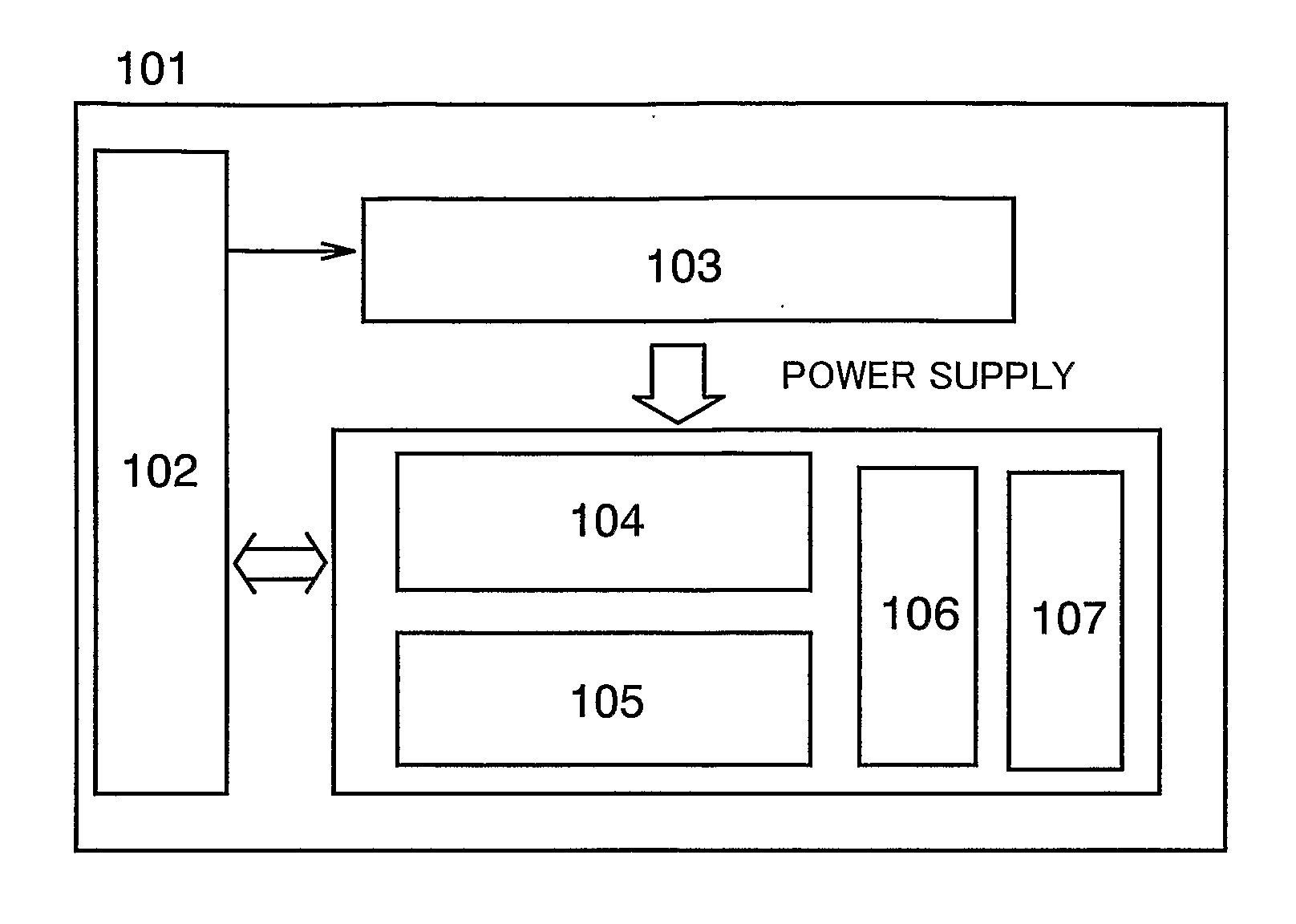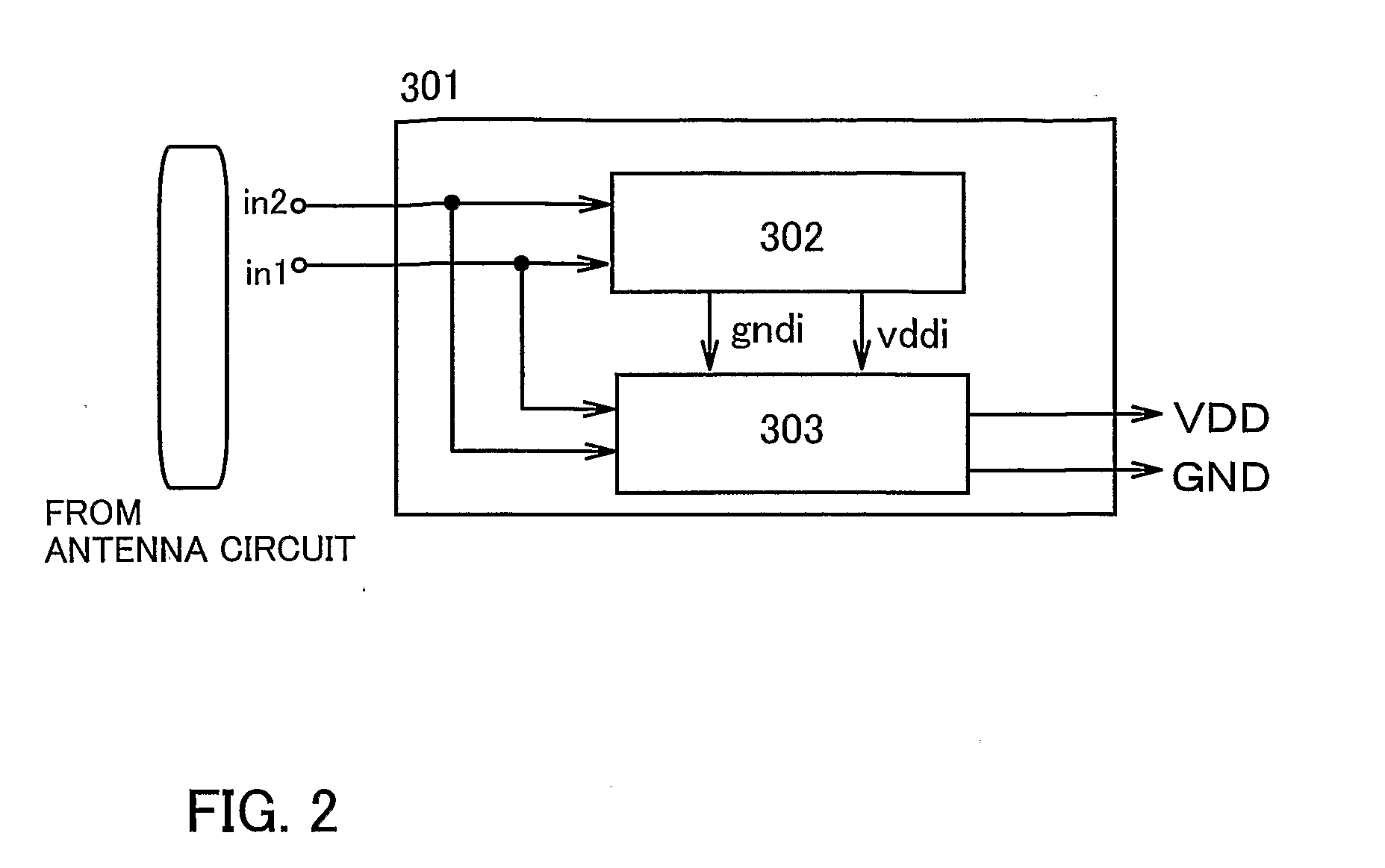Wireless Chip
a wireless chip and chip technology, applied in the direction of electrical equipment, support structure mounting, semiconductor devices, etc., can solve the problems of less easily received with a smaller antenna and shorter communication distance, and achieve the effect of improving communication distan
- Summary
- Abstract
- Description
- Claims
- Application Information
AI Technical Summary
Benefits of technology
Problems solved by technology
Method used
Image
Examples
embodiment mode 1
[0045] In this embodiment mode, a configuration of an ID chip of the invention is described.
[0046] As shown in FIG. 1, an ID chip 101 includes an antenna circuit 102, a boosting power source circuit 103, a demodulation circuit 104, a modulation circuit 105, a memory interface (IF) 106 and a memory 107. Such IC chip 101 reads or writes data from / to the memory 107 in accordance with an instruction (signal) received by the antenna circuit 102. The boosting power source circuit 103 has a function to generate a boosted power source voltage based on an AC signal generated in the antenna circuit 102, and supply power to the demodulation circuit 104, the modulation circuit 105, the memory interface (IF) 106, the memory 107 and the like.
[0047] The boosting power source circuit 103 of the invention can, even in the case where a signal amplitude large enough to operate an internal logic circuit of a demodulation circuit or a modulation circuit cannot be obtained, operate normally and generat...
embodiment mode 2
[0065] Description is made on a specific circuit configuration of the boosting power source circuit of the invention.
[0066] A boosting power source circuit 501 shown in FIG. 4 includes a rectifier circuit 502 and a boosting circuit 503, and input terminals in1 and in2 thereof receive signals from an antenna circuit directly or through capacitors. The boosting power source circuit 501 outputs a power source potential (VDD) and a ground potential (GND).
[0067] The rectifier circuit 502 includes two diodes 507 and 508 connected in series and a capacitor 506. An input terminal of the diode 507 is connected to the input terminal in1 while an output terminal thereof (node n3) is connected to one terminal of the capacitor 506 and an input terminal of the diode 508. The other terminal of the capacitor 506 is connected to the input terminal in2. Upon input of signals to the rectifier circuit 502 from the input terminals in1 and in2, the potential vddi and the potential gndi are generated. T...
embodiment 1
[0082] In this embodiment, description is made with reference to FIG. 6 on the case where a limiter circuit is provided at the output of the boosting power source circuit of the invention.
[0083] An amplitude of an input signal of an ID chip is dependent on the communication distance and the intensity of a signal source. A power source potential generated by a boosting power source circuit is dependent on the amplitude and frequency of the input signal, the number of boosting stages of the boosting power source circuit and the threshold voltage of a diode. As a result, the power source potential generated by the boosting power source circuit is dependent on the communication distance and the intensity of a signal source.
[0084] The boosting circuit of the invention operates with high performance even in the case where an amplitude of an input signal is small. Meanwhile, in the case where an amplitude of an input signal is large, there is a possibility that an extremely high power so...
PUM
 Login to View More
Login to View More Abstract
Description
Claims
Application Information
 Login to View More
Login to View More - R&D
- Intellectual Property
- Life Sciences
- Materials
- Tech Scout
- Unparalleled Data Quality
- Higher Quality Content
- 60% Fewer Hallucinations
Browse by: Latest US Patents, China's latest patents, Technical Efficacy Thesaurus, Application Domain, Technology Topic, Popular Technical Reports.
© 2025 PatSnap. All rights reserved.Legal|Privacy policy|Modern Slavery Act Transparency Statement|Sitemap|About US| Contact US: help@patsnap.com



